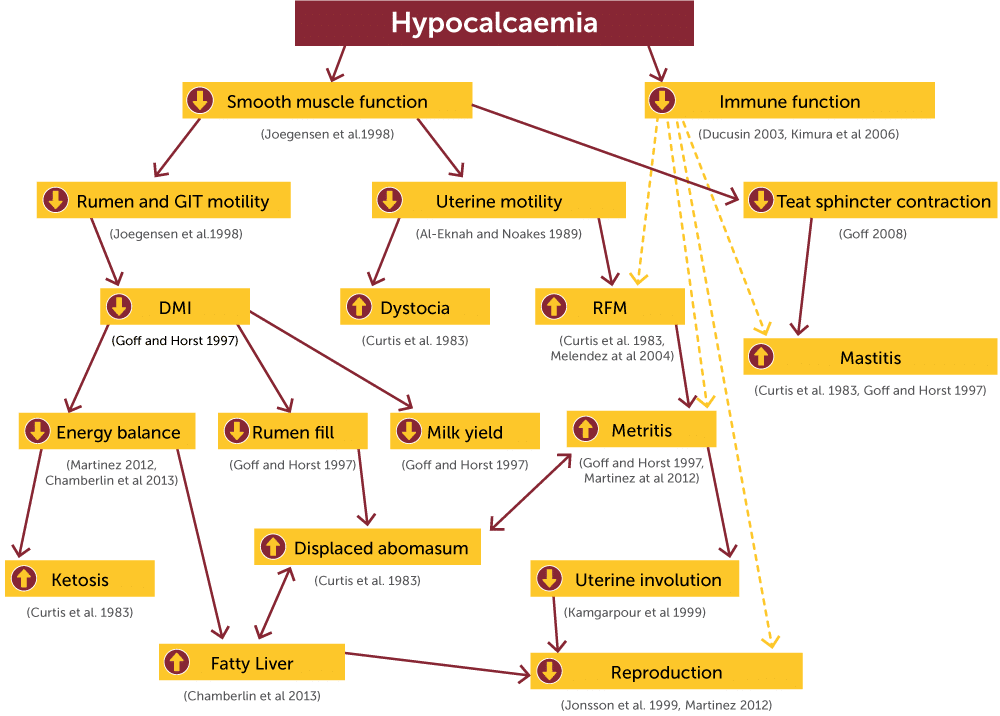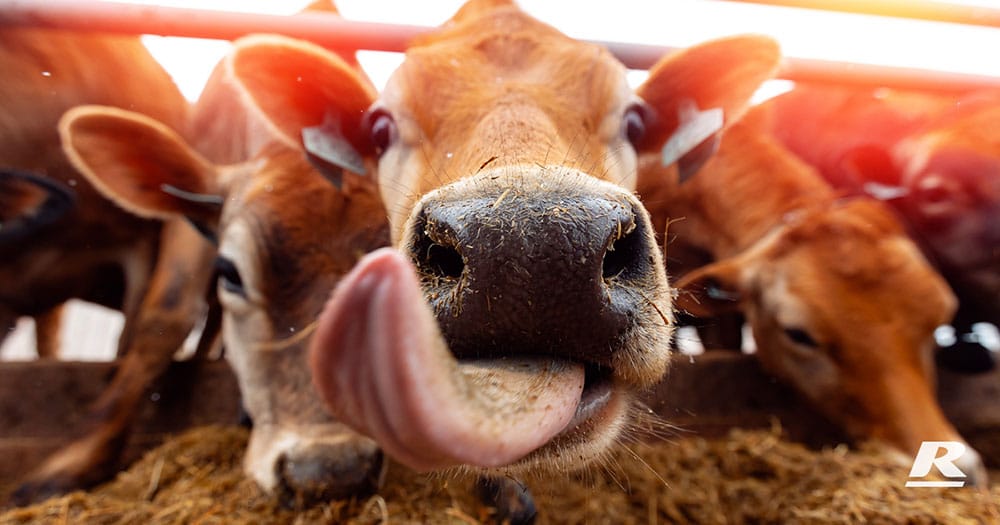Transition Cow Management
Transition cow management is the process of preparing the dairy cow for the transition from the dry period to the lactation period. The transition period is a critical time for dairy cows as it sets the foundation for their future health, milk production and overall herd performance. Correct transition period management can lead to improved milk yield and reduced health issues, which therefore result in increased profitability for the producer.
The transition period is a six week period which includes the three weeks prior to, and three weeks post calving. During this period, cows experience several physiological changes as they adapt to the demands of lactation, which include changes in hormone levels, energy balance and nutrient requirements. Dairy cows also undergo large metabolic adaptations during this period in glucose, fatty acid and mineral metabolism, which support lactation and avoid metabolic dysfunction. Proper nutrition and management strategies are necessary to support these changes and metabolic adaptations.
The transition period is where up to 80% of the total annual disease costs occur in addition to being the peak period for involuntary culling and death. Common diseases that are a result of a shortage of necessary nutrients during the transition period include:
- Hypocalcaemia and milk fever
- Hypomagnesaemia
- Ketosis and fatty liver
- Ruminal acidosis
- Mastitis
- Udder oedema
- Abomasal displacement
- Retained foetal membranes (RFMs)/metritis
- Poor fertility and poor production
Achievable targets for cow health problems of cows within 14 days of calving
| Indicator | Target performance | Seek help if... |
|---|---|---|
| Milk fever | 1% (8 years of age or less) 2% (greater than 8 years of age | Greater than 3% |
| Pregnancy toxaemia | No cases | One or more cases |
| Clinical ketosis | Less than 1% | Greater than 2% |
| Abomasal displacements (left or right) | Less than 1% | Greater than 2% |
| Clinical mastitis | Less than 5% in the first 14 days after calving | Greater than 5% in the first 14 days after calving |
| Lameness (spreacher et al., 1997 scale 1-5) | Less than 2% (greater than Score 2) | Greater than 4% (greater than Score 2) |
| Hypomagnesaemia | No caes | One or more cases |
| Retained foetal membranes greater than 12 hours after calving | Less than 3% | Greater than 6% |
| Endometritis — infected after 21 days | Less than 3% | Greater than 10% |
| Calving difficulty | Less than 2% | Greater than 3% |
| Lactic acidosis | Less than 1% | Greater than 1% |
An integrated nutritional approach is required to optimise rumen function, calcium and bone metabolism, energy and protein metabolism, and immune function. There are four main aims for transition cow management. Cows should be managed to:
- Reduce ruminal disruption: avoid acidosis and sub-acute ruminal acidosis (SARA) as a result of suppressed appetite and rapid introduction to grain/concentrate
- Minimise macro-mineral deficiencies: mainly calcium, magnesium and phosphorus resulting in metabolic diseases
- Minimise lipid mobilisation disorders: such as ketosis, fatty liver, pregnancy toxaemia and other diseases that are influenced by insufficient or ineffective energy sources around calving
- Minimise immune suppression: as a result of insufficient energy and protein total intake, and the quality/source of these. Trace minerals and vitamins also play an important role in immunity
Integrated Transition Diet
Close-up dry cows (three weeks before calving)
As calving approaches, it is critical to take steps to ensure a dairy cow is set up for a successful lactation. Strategies to achieve the above goals include:
- Ensure all cows are at target body condition two to three weeks before calving. A body condition score (BCS) of 4.5-5.5 is the target range, with BCS 5 being most desirable. A BCS of 6 may increase susceptibility to ketosis and fatty liver. It is important for cows to be in a condition in which body tissue reserves for fat and protein can be mobilised to support the foetus and milk production, until intake can catch up with demand.
- Lead feed with a grain-based concentrate 21 days before calving. Lead feeding will assist in:
- The optimisation of dry matter intake – the more the cows can eat in the transition period, the higher feed intake post-calving, and therefore higher milk production
- Preparation of the rumen for higher concentrate levels in the milking diet
- Prevent disorders caused by metabolic issues such as milk fever, grass tetany and ketosis
- Provide energy in the diet to encourage intake which will minimise the loss of body condition, help prevent ketosis and encourage the maximisation of peak milk yield
- Provide high quality amino acids (protein) to improve appetite and stimulate the mammary tissue
- Feed close-up dry cows a similar diet (concentrate and forages) to the milking herd to successfully adapt the rumen microbes to the new diet and improve dry matter intake (DMI) at calving.
- Provide adequate vitamin and mineral levels in the diet
- Low DCAD, low calcium diet prior to calving to increase the efficiency of calcium absorption and therefore reducing the risk of milk fever
- Supplementation of magnesium, as calcium and magnesium are linked.

Fresh cows
The potential milk production for the whole lactation is determined by milk yield at the peak of lactation. One extra litre/day at peak milk yield can mean an extra 200L for the full lactation. Therefore, it is important to support fresh cows after their changes during the transition period. Ways to achieve this are:
- At calving, appetite and therefore dry matter intake is about half to two thirds of maximum therefore it is important to provide a balanced diet with high quality forages and concentrates to support maximum dry matter intake as soon as possible after calving.
- Provide a high DCAD, high calcium diet to meet rapidly increasing calcium demand
- Provide an energy dense and highly digestible diet to increase energy intake from less dry matter to produce a greater amount of milk and minimise the rate of body tissue mobilisation
- Increase the concentrate amount gradually to reduce the risk of acidosis
- Ensure the diet contains sufficient buffering
- Ensure high quality protein sources are supplemented to drive appetite
If cows are underfed during early lactation, they will often partition fat and protein tissue reserves to milk production. Body condition loss should not exceed ¾ of a BCS. Excessive BCS loss can negatively impact fertility.
Summary
In conclusion, transition cow management is a critical aspect of dairy production. Proper nutrition and health management strategies can help ensure a successful transition for dairy cows, resulting in improved milk production, reduced health problems, and ultimately increased profitability for dairy farmers. Effective transition cow management requires an integrated approach, taking into account the unique needs of the overall herd as they transition from dry to fresh cows.
To find out more about the best animal & stock feeds near you or health management strategy for your herd, give us a call and have a chat to one of our nutritionist on 1300 REID FEED or enquire here >
Author
Christine Harris
Sales & Nutrition Account Manager
Source: Dairy Australia, Transition Cow Management, Second Edition 2021.
